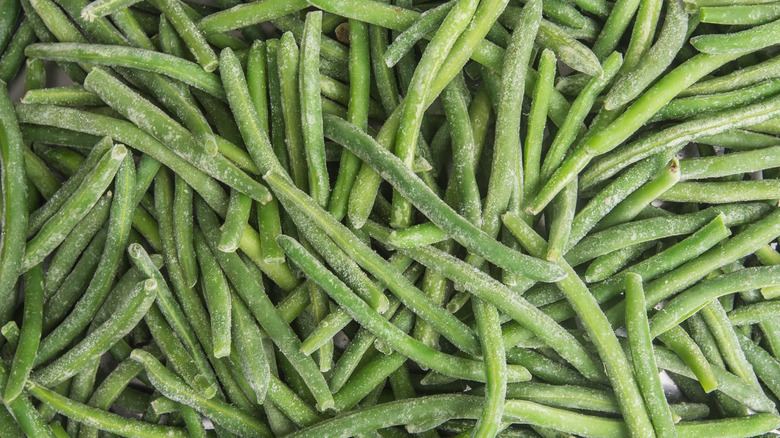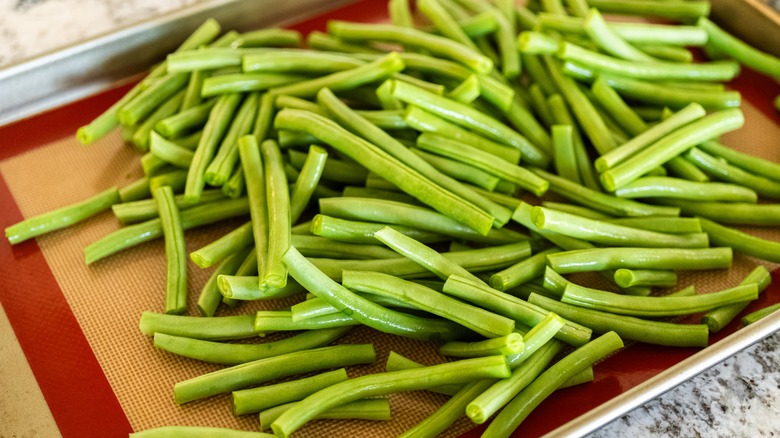How To Freeze Green Beans The Right Way
Before you start adding delicious, crunchy toppings to green bean casserole, you must learn how to handle the green beans themselves. It's long been argued whether frozen vegetables are as healthy as fresh vegetables, and much of that answer is rooted in whether or not you blanch before freezing. Prepare your green beans for a trip to the freezer by blanching them to achieve better taste and texture and to kill the majority of harmful bacteria that may be lurking on the vegetable.
To properly blanch green beans, first give them a good rinse in some cold water and trim the ends to make them easier to store. Put a pot of water on the stove, add some salt, and let it come to a boil before adding green beans. Let the green beans boil in the water for around two minutes. The process should bring out a more vibrant color in the vegetables. When this occurs, drain the water and transfer the beans to a pan lined with towels and pat them dry. Once the green beans are completely dry, put them in a freezer bag and — taking care to seal in as little air as possible — close the bag and place it in the freezer. Once in the freezer, the green beans can last up to one year. However, after the first few months, the quality may begin to diminish.
Other methods of blanching green beans
Another popular method of blanching green beans is cryo-blanching. This method involves freezing your green beans without boiling them first. Cryo-blanching is done only to vegetables that have a seam on them (like green beans). They also have to be frozen in a single layer. One way to freeze green beans is to lay them out on a baking sheet and place them in the freezer for several hours before transferring them to a freezer-safe bag, where they can mix without getting stuck together. The goal of cryo-blanching is to achieve the results of regular blanching without compromising any of the vegetable's flavor.
Cryo-blanching is meant to be done rapidly and eliminates crucial steps involved with blanching vegetables. If your goal is to kill bacteria, boiling may be best, but cryo-blanching does have its perks. Freezing can eliminate 90% or more of bacteria on food, while cooking the food (even for the short amount of time it takes to blanch) can kill nearly all harmful bacteria involved with food-borne illness. Each has its time and place.

